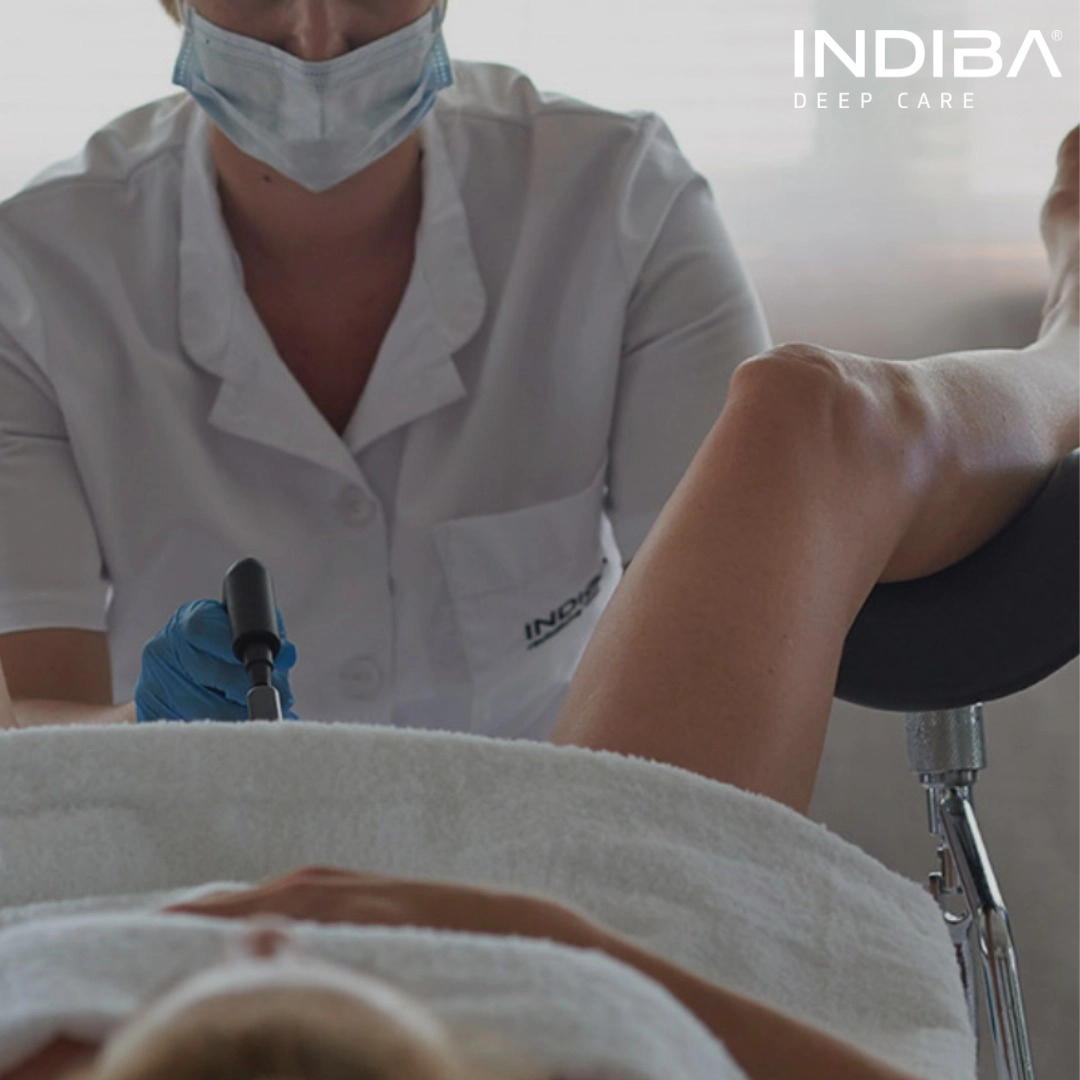Vaginismus: Causes, Symptoms & Treatment
Vaginismus is a term that describes an involuntary and uncomfortable contraction of the vaginal muscles during penetration, often leading to painful intercourse. While commonly experienced during sexual penetration, the muscles associated with vaginismus may also contract when you are using a tampon, undergoing a gynaecological exam, or a cervical smear test.
If you're suffering from vaginismus, you will be relieved to know that it's a treatable condition, and the majority of women treated for it achieve a full recovery. In this article we will explore the symptoms, potential causes, and effective treatments for vaginismus.

Causes of Vaginismus
The precise cause of vaginismus remains unknown. However, some researchers suggest that the squeezing of the vaginal muscles in this way is linked to an involuntary psychological anxiety about possible pain during vaginal penetration. As a result of this fear, the mind sends a signal to the vaginal muscles tighten and limit or prevent penetration to protect against anticipated discomfort or pain.
There are various reasons for this, and different women may well have different experiences of vaginismus. Some may develop anxiety about penetration after pelvic injury, surgery, or giving birth. Others may find it follows as the result of the discomfort of menopausal vaginal dryness, interstitial cystitis, or an underlying vaginal infection, resulting in what is termed as Secondary Vaginismus. This type typically arises in older women who had previously experienced penetration without pain.
Primary vaginismus is diagnosed when women have always felt pain during penetration, even when young and attempting to use a tampon for the first time. In such cases, anxiety about penetration may come as a result of a lack of sexual education, fear of intercourse, worry about getting pregnant, or a history of sexual abuse.
Symptoms of Vaginismus
The first symptom of vaginismus is an involuntary tightening of the muscles in the vaginal walls upon penetration. That can be for any reason, including sexual intercourse or other activities like inserting a tampon or undergoing a gynaecological exam. For some, the pain subsides after penetration, while for others the sensation of vaginal tightness lingers. This discomfort during penetration often triggers anxiety or fear of further pain, leading to a diminished sexual desire or low libido.
Diagnosing Vaginismus
Many women may avoid discussing their vaginismus symptoms due to embarrassment, which can adversely impact their attitude toward sex and relationships. However, it's essential to recognize that vaginismus is treatable, with 90% of women achieving a satisfying sex life post-treatment.
Book A Women's Physio Consultation Now
To initiate treatment, it's crucial to consult a healthcare professional like a women's health physiotherapist or doctor for an accurate diagnosis. If discussing vaginismus symptoms with your usual doctor is uncomfortable, a specialist gynaecologist or women's physio may be a preferable option. They will typically ask a range of health and lifestyle questions before conducting a gentle pelvic exam to rule out other underlying conditions. If vaginismus is diagnosed, then a personalised treatment plan will be devised.

Treatment Options for Vaginismus
Your vaginismus treatment will depend on whether it is primary or secondary, as well as its underlying causes. Effective treatments include pelvic physical therapy, sex therapy, dilator therapy, pelvic exercises, mind-body relaxation techniques, home remedies, and—in extreme cases—surgery.
Pelvic Floor Physiotherapy
Pelvic physiotherapy, specializing in addressing dysfunction and discomfort in the pelvic and vaginal area, is often the primary treatment for vaginismus. Therapists use massage and muscle retraining techniques to relax the tight muscles associated with vaginismus.
Continued massage and relaxation of vaginal muscles at home through regular dilator therapy are recommended for successful treatment.
Therapy and Relaxation
Combining women's healthy physiotherapy with mindful therapy helps address the psychological aspect of vaginismus. Women benefit from speaking with a therapist or sex therapist to uncover the root cause of their fear and work towards overcoming it. This is especially helpful for those with primary vaginismus resulting from a lack of sexual education or fear of intercourse.
For those with secondary vaginismus related to recent surgery, pelvic injuries, infections, menopause, or vaginal dryness, a combination of physical therapy, dilator therapy, and relaxation techniques like deep belly breathing or meditation can provide relief.
Surgery for Vaginismus
In cases where other treatments are ineffective, a brief surgical procedure involving Botox injections into the vaginal muscles may be considered. This temporarily prevents muscle tightening, and when they combine it with post-surgery dilator therapy, many women experience pain-free penetration and a return to a satisfying sex life as a result.
Home Remedies for Vaginismus
While professional guidance from physical and sex therapists is crucial, there are home remedies that can aid in the recovery from vaginismus. These include:
1. Vaginal Dilator Therapy at Home
Vaginal dilators, designed to gently stretch tight vaginal and pelvic floor muscles, are recommended to relieve pain during penetration. Available in sets of ascending sizes, these medical devices help women gradually adjust to larger sizes over time. Regular use enhances blood flow to vaginal tissues and improves natural lubrication.
Consulting with a pelvic physio for guidance on the correct dilator size and usage frequency is recommended.
2. Home Relaxation Techniques
Deep conscious belly breathing is an effective home relaxation technique for vaginismus. This technique, practiced regularly, relaxes abdominal muscles connected to the pelvic floor. It engages the parasympathetic nervous system, reducing stress hormones released when the body is tense.
Instructions for deep belly breathing include lying on your back with hands resting gently on your belly, inhaling deeply to feel the belly rise, and exhaling to feel the belly fall toward the lower spine. Repeat at least ten times, 2-3 times per day.

3. Pelvic Floor Exercises
Regular practice of pelvic floor exercises, such as child’s pose, happy baby, superwoman, pelvic floor drops, and piriformis stretches, can aid in retraining pelvic and vaginal muscles after relaxation. Daily performance helps regain control and prevent unintentional muscle tightening during future penetration.
Resolving Vaginismus
Vaginismus affects approximately 7% of women globally, impacting not only sexual pleasure but also confidence, relationships, and physical health. But vaginismus is treatable, and with the help of various therapies, home remedies, and relaxation techniques, most women can make a full recovery and return to a satisfying sex life.
Remember, it's essential to consult with a healthcare professional, such as a pelvic health specialist or gynaecologist, to determine the most suitable treatment plan for your specific symptoms. Furthermore, open communication with your healthcare provider is crucial to address any concerns or questions you may have throughout the treatment process.
Book A Women's Physio Consultation Now
For advice on treating vaginismus or other women's health problems, call Magdalena on 07877 017 936 or drop PelviCare an email. Alternatively, you can book an appointment online.
PelviCare Women's Health Physiotherapy is located in Greenwich, London, serving women across South London, East London, Essex, Kent and beyond.
Recommended Articles:
Vulvodynia, Vaginismus and Dyspareunia
How Can Women’s Health Physiotherapy Help My Pelvic Floor?
Vaginal Dryness: Causes & Treatment